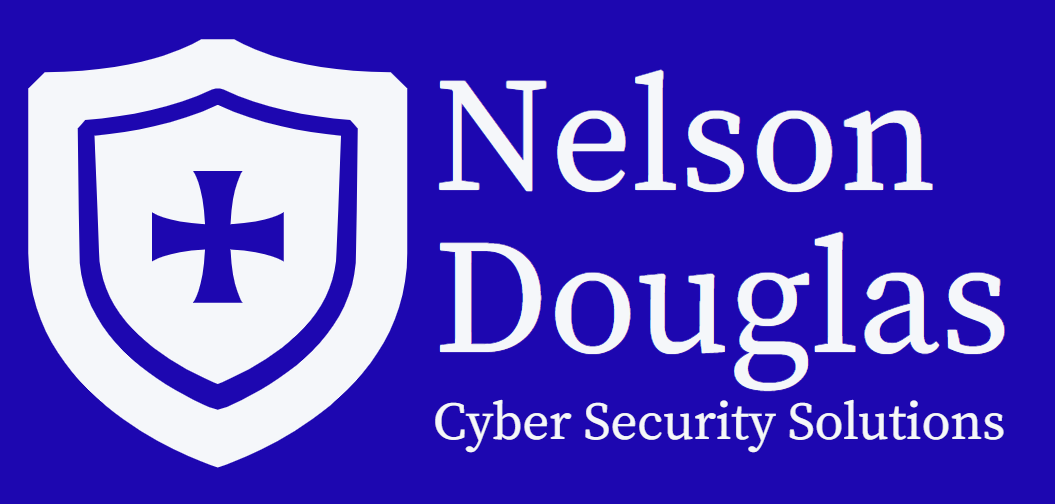Web Hosting for Everybody
Strategic Performance Optimization
Reliable web hosting requires a balance of speed, security, and scalability. By analyzing server performance, traffic demands, and resource utilization, we implement hosting solutions that maximize uptime and efficiency while maintaining a seamless user experience.
Efficient Infrastructure and Security Management
A well-structured hosting environment minimizes downtime and protects against cyber threats. We work closely with clients to configure secure servers, optimize content delivery, and implement protective measures such as firewalls, DDoS mitigation, and SSL encryption. Our proactive approach ensures websites remain secure, stable, and always accessible.
Scalability and Cost-Effective Hosting Solutions
As businesses grow, their hosting needs evolve. We provide scalable solutions that adapt to increasing traffic demands without compromising performance. Our offerings include cloud-based hosting, dedicated servers, and managed hosting services that optimize resource allocation while keeping costs under control.
Optimized Server Configuration and Performance Tuning
Choosing the right hosting environment is crucial for website performance. We fine-tune server settings, leverage caching mechanisms, and optimize databases to enhance load times and reliability. Our solutions include CDN integration, automated backups, and resource monitoring to ensure peak efficiency.
Continuous Monitoring and Support
Web hosting is an ongoing process that requires continuous monitoring and rapid response. We provide real-time performance tracking, security updates, and 24/7 technical support to address issues before they impact operations. By ensuring stability and security, we help businesses maintain a strong online presence with minimal disruption.

Application-Specific Design
Generic, one-size-fits-all component solutions rarely deliver optimal cost-effectiveness in high-volume applications. Our design philosophy begins with a deep dive into understanding the specific nuances of your product and its intended use environment. We analyze factors such as operating temperatures, power requirements, performance targets, expected lifespan, and regulatory compliance. This granular understanding enables us to tailor component selection and design from the ground up, ensuring that every component serves a specific purpose and contributes to the overall value proposition of the product.
Intelligent Material Selection
The choice of materials plays a crucial role in both the performance and cost of a component. We go beyond simply selecting the cheapest available material. Our team of materials scientists and engineers carefully evaluates a wide range of materials, considering factors like cost, availability, durability, performance characteristics (e.g., conductivity, strength, thermal properties), and environmental impact. We explore innovative materials and manufacturing processes, such as advanced polymers, composites, and additive manufacturing, to identify cost-effective alternatives to traditional materials.
Comprehensive Component Analysis and Optimization
We conduct thorough teardown analyses and cost modeling of existing products or proposed designs to identify opportunities for component cost reduction. This includes evaluating component specifications, identifying potential substitutes with comparable performance but lower cost, and exploring different package types or form factors. We also analyze the supply chain for each component, looking for opportunities to consolidate suppliers, leverage volume discounts, or negotiate better pricing.
Strategic Supplier Partnerships
Strong relationships with trusted suppliers are essential for securing competitive pricing and ensuring a reliable supply of high-quality components. We cultivate long-term partnerships with key suppliers, leveraging our collective buying power to negotiate favorable terms and volume discounts. We also work closely with suppliers to identify opportunities for joint cost reduction initiatives, such as optimizing component design or improving manufacturing processes.
Value Engineering and Value Analysis
We employ value engineering and value analysis methodologies to systematically examine every aspect of the product, from its functionality to its cost. The goal is to identify and eliminate any unnecessary costs without compromising the product’s value or performance. This involves a collaborative process that brings together engineers, designers, manufacturing specialists, and marketing professionals to challenge assumptions and explore alternative solutions.
Lean Manufacturing Principles
We implement lean manufacturing principles throughout our production facilities to eliminate waste, improve efficiency, and reduce costs. This includes techniques such as just-in-time inventory management, kanban systems, and continuous flow manufacturing.
Automation and Robotics
We leverage automation and robotics to streamline manufacturing processes, reduce labor costs, and improve product consistency. Automated assembly lines, robotic handling systems, and automated testing equipment are strategically deployed to maximize efficiency and minimize human error.
Process Optimization and Continuous Improvement
We continuously monitor and analyze our manufacturing processes to identify areas for improvement. We use statistical process control and other quality management tools to track key metrics and identify opportunities to reduce defects, improve yields, and optimize production flow.
Smart Prototyping and Simulation
We utilize advanced prototyping techniques, including 3D printing, rapid tooling, and simulation software, to quickly and cost-effectively validate designs and identify potential issues early in the development cycle. This reduces the need for costly physical prototypes and minimizes the risk of design errors that could lead to expensive rework later in the production process.
Design Verification and Testing
Rigorous design verification and testing are essential to ensure that components and products meet all performance and quality requirements. We develop comprehensive test plans that cover all critical parameters and utilize automated test equipment whenever possible to reduce testing time and costs.
Global Sourcing Strategies
We explore global sourcing opportunities to identify suppliers who can offer the best combination of price, quality, and lead times. We carefully evaluate potential suppliers based on their capabilities, reliability, and financial stability.
Inventory Management
We implement sophisticated inventory management systems to optimize inventory levels, minimize carrying costs, and prevent stockouts. We use demand forecasting and other analytical tools to predict future demand and adjust inventory levels accordingly.
Solutions
Shared Hosting
Shared hosting is an affordable solution suitable for small businesses and personal websites. Multiple websites share the same server resources, including CPU, RAM, and disk space. However, resource limitations and potential security risks due to multiple users on the same server make it less ideal for high-traffic or security-sensitive applications. It is often the first step for individuals or startups but lacks the control and scalability required for business growth.
Virtual Private Server (VPS) Hosting
VPS hosting provides dedicated resources within a shared environment, offering better performance and scalability than shared hosting. Users receive a virtualized instance with allocated computing resources, allowing for more flexibility, control, and stability. It is ideal for growing businesses that require more control over their hosting environment while keeping costs lower than a dedicated server.
Dedicated and Cloud Hosting
Dedicated servers provide exclusive resources and high customization options, making them the most powerful option for businesses that require high performance and security. Meanwhile, cloud hosting offers scalability and redundancy by distributing resources across multiple virtual machines. Cloud solutions like AWS, Azure, and Google Cloud enhance flexibility and resilience for large-scale applications. These options provide a balance between performance, security, and cost-effectiveness, allowing businesses to scale their web presence efficiently.
Content Delivery Network (CDN) Implementation
CDNs distribute website content across multiple geographic locations, reducing latency and improving page load times. This approach enhances user experience and reduces bandwidth costs. Popular CDNs such as Cloudflare and Akamai optimize content delivery by caching static files closer to end-users, reducing server load and enhancing website responsiveness.
Caching and Compression Techniques
Enabling server-side caching mechanisms such as object caching, database query caching, and Gzip compression reduces server load and speeds up content delivery. Caching eliminates redundant data retrieval, leading to faster page load times. Implementing browser caching ensures that returning users experience even faster load times, improving overall website efficiency.
Database Optimization and Load Balancing
Efficient database indexing, query optimization, and load balancing strategies prevent performance bottlenecks. Implementing read-replica databases and connection pooling further enhances scalability for dynamic websites. Load balancing distributes traffic evenly across multiple servers, preventing slowdowns and ensuring continuous uptime during high-traffic periods.
SSL/TLS Encryption and Secure Protocols
Ensuring that websites use SSL/TLS encryption secures data transmissions and enhances user trust. Enforcing HTTPS and using security headers such as HSTS and CSP protect against common web-based attacks, including man-in-the-middle attacks and data interception.
DDoS Protection and Web Application Firewalls (WAF)
Deploying a WAF and DDoS mitigation tools prevents cyber threats such as SQL injection, cross-site scripting (XSS), and botnet attacks. Security monitoring tools help detect and respond to threats in real time. Advanced DDoS protection services from providers like Cloudflare and Imperva safeguard businesses against volumetric attacks that could take their websites offline.
Regular Backups and Disaster Recovery Planning
Automating regular backups ensures data integrity in case of a security breach or server failure. Offsite backup storage solutions and disaster recovery strategies minimize downtime and data loss. Incremental backups, snapshot recovery, and geographically distributed storage options ensure fast recovery times and business continuity in case of cyberattacks or hardware failures.
Server Response Time and Uptime Management
Fast server response times and high uptime are crucial ranking factors for search engines. Using high-performance hosting solutions, optimizing server configurations, and monitoring uptime metrics ensure site reliability. Hosting on SSD-based servers, using HTTP/2, and configuring web server settings efficiently improve performance and contribute to better search rankings.
Mobile Optimization and Core Web Vitals
Hosting infrastructure should support mobile-friendly designs and prioritize Core Web Vitals, including page load speed, interactivity, and visual stability, for improved search rankings. Mobile-first indexing requires websites to deliver an optimal experience on mobile devices. Implementing responsive design and AMP (Accelerated Mobile Pages) ensures a seamless browsing experience across devices.
SEO-Friendly URL Structuring and Security Practices
Proper URL structuring, implementation of structured data, and enforcing security practices such as preventing duplicate content and fixing broken links enhance SEO performance. Secure web hosting reduces the risk of search engine penalties caused by malware infections, blacklisted domains, or slow-loading websites.
Auto-Scaling Capabilities
Hosting solutions with auto-scaling features adjust resources dynamically based on traffic demands. This ensures seamless performance during high-traffic periods, making it ideal for eCommerce websites and content-heavy platforms. Cloud-based auto-scaling solutions dynamically allocate bandwidth and computing power as required, preventing downtime and enhancing efficiency.
Containerization and Microservices
Using Docker and Kubernetes for containerized applications enhances deployment flexibility, scalability, and maintenance efficiency. Microservices architecture allows businesses to scale specific parts of their applications independently, ensuring better resource allocation and more resilient web applications.
Edge Computing and Emerging Technologies
Integrating edge computing and emerging cloud technologies improves response times and supports next-generation web applications. By processing data closer to the user, edge computing reduces latency and enhances performance. Technologies such as serverless computing, AI-driven automation, and blockchain-based hosting solutions provide future-proof web hosting strategies for businesses looking to stay ahead in an evolving digital landscape.
Shared Hosting
Shared hosting is an affordable solution suitable for small businesses and personal websites. Multiple websites share the same server resources, including CPU, RAM, and disk space. However, resource limitations and potential security risks due to multiple users on the same server make it less ideal for high-traffic or security-sensitive applications. It is often the first step for individuals or startups but lacks the control and scalability required for business growth.
Virtual Private Server (VPS) Hosting
VPS hosting provides dedicated resources within a shared environment, offering better performance and scalability than shared hosting. Users receive a virtualized instance with allocated computing resources, allowing for more flexibility, control, and stability. It is ideal for growing businesses that require more control over their hosting environment while keeping costs lower than a dedicated server.
Dedicated and Cloud Hosting
Dedicated servers provide exclusive resources and high customization options, making them the most powerful option for businesses that require high performance and security. Meanwhile, cloud hosting offers scalability and redundancy by distributing resources across multiple virtual machines. Cloud solutions like AWS, Azure, and Google Cloud enhance flexibility and resilience for large-scale applications. These options provide a balance between performance, security, and cost-effectiveness, allowing businesses to scale their web presence efficiently.
Content Delivery Network (CDN) Implementation
CDNs distribute website content across multiple geographic locations, reducing latency and improving page load times. This approach enhances user experience and reduces bandwidth costs. Popular CDNs such as Cloudflare and Akamai optimize content delivery by caching static files closer to end-users, reducing server load and enhancing website responsiveness.
Caching and Compression Techniques
Enabling server-side caching mechanisms such as object caching, database query caching, and Gzip compression reduces server load and speeds up content delivery. Caching eliminates redundant data retrieval, leading to faster page load times. Implementing browser caching ensures that returning users experience even faster load times, improving overall website efficiency.
Database Optimization and Load Balancing
Efficient database indexing, query optimization, and load balancing strategies prevent performance bottlenecks. Implementing read-replica databases and connection pooling further enhances scalability for dynamic websites. Load balancing distributes traffic evenly across multiple servers, preventing slowdowns and ensuring continuous uptime during high-traffic periods.
SSL/TLS Encryption and Secure Protocols
Ensuring that websites use SSL/TLS encryption secures data transmissions and enhances user trust. Enforcing HTTPS and using security headers such as HSTS and CSP protect against common web-based attacks, including man-in-the-middle attacks and data interception.
DDoS Protection and Web Application Firewalls (WAF)
Deploying a WAF and DDoS mitigation tools prevents cyber threats such as SQL injection, cross-site scripting (XSS), and botnet attacks. Security monitoring tools help detect and respond to threats in real time. Advanced DDoS protection services from providers like Cloudflare and Imperva safeguard businesses against volumetric attacks that could take their websites offline.
Regular Backups and Disaster Recovery Planning
Automating regular backups ensures data integrity in case of a security breach or server failure. Offsite backup storage solutions and disaster recovery strategies minimize downtime and data loss. Incremental backups, snapshot recovery, and geographically distributed storage options ensure fast recovery times and business continuity in case of cyberattacks or hardware failures.
Server Response Time and Uptime Management
Fast server response times and high uptime are crucial ranking factors for search engines. Using high-performance hosting solutions, optimizing server configurations, and monitoring uptime metrics ensure site reliability. Hosting on SSD-based servers, using HTTP/2, and configuring web server settings efficiently improve performance and contribute to better search rankings.
Mobile Optimization and Core Web Vitals
Hosting infrastructure should support mobile-friendly designs and prioritize Core Web Vitals, including page load speed, interactivity, and visual stability, for improved search rankings. Mobile-first indexing requires websites to deliver an optimal experience on mobile devices. Implementing responsive design and AMP (Accelerated Mobile Pages) ensures a seamless browsing experience across devices.
SEO-Friendly URL Structuring and Security Practices
Proper URL structuring, implementation of structured data, and enforcing security practices such as preventing duplicate content and fixing broken links enhance SEO performance. Secure web hosting reduces the risk of search engine penalties caused by malware infections, blacklisted domains, or slow-loading websites.
Auto-Scaling Capabilities
Hosting solutions with auto-scaling features adjust resources dynamically based on traffic demands. This ensures seamless performance during high-traffic periods, making it ideal for eCommerce websites and content-heavy platforms. Cloud-based auto-scaling solutions dynamically allocate bandwidth and computing power as required, preventing downtime and enhancing efficiency.
Containerization and Microservices
Using Docker and Kubernetes for containerized applications enhances deployment flexibility, scalability, and maintenance efficiency. Microservices architecture allows businesses to scale specific parts of their applications independently, ensuring better resource allocation and more resilient web applications.
Edge Computing and Emerging Technologies
Integrating edge computing and emerging cloud technologies improves response times and supports next-generation web applications. By processing data closer to the user, edge computing reduces latency and enhances performance. Technologies such as serverless computing, AI-driven automation, and blockchain-based hosting solutions provide future-proof web hosting strategies for businesses looking to stay ahead in an evolving digital landscape.
Have a question or need expert advice? Contact us now, and let’s bring your ideas to life!
Our Hosting Pricing List
Standard
Our standard service, suitable for most use cases
Fast Web Hosting
1x Weekly Blog
Secure Site Configuration
Plus
out most popular hosting package
Active Backend Security Monitoring
2x Weekly Blogs
In his nemore temporibus
Premium
Our High Priority service for more complex infrastructure
Everything from Plus
5x Weekly Blogs
Prio
Contact Us Today
Latest news

The Difference Between CTFs and AppSec
1. Real Applications Are Vastly More Complex CTFs typically involve hunting for vulnerabilities in custom-built[…]

A Guide to AWS S3 Bucket Penetration Testing
Introduction Misconfigurations in cloud environments and resulting data breaches frequently put AWS Simple Storage Service[…]

A Complete Guide To ISO 27001 Penetration Testing
Introduction ISO 27001 compliance entails proving that an organization’s information security management system (ISMS) aligns[…]
